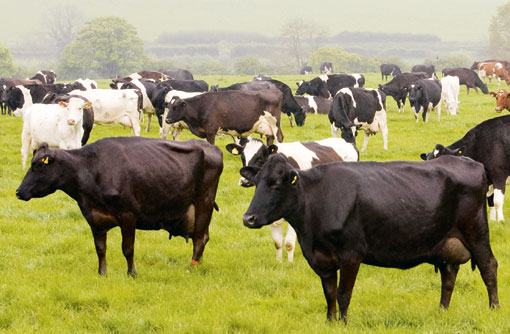Weighing up the pros and cons of block-calving

Seasonality payments have long been used to encourage changes in milk production profiles.
Recently the combination of bonuses and penalties by milk buyers seeking a level supply profile has discouraged many from switching to efficient block-calving.
But spiralling costs and a lack of enthusiasm for the job require a rethink, says DairyCo extension officer Sarah Bolt. “Is it worth trying to follow those carrots to produce milk all year round, or are you just creating work for yourself?”
“Look again at whether your farm and lifestyle suits a block or seasonal calving – the benefits may actually outweigh the penalties on your milk contract.”
Initially, Ms Bolt thought a solution would be for milk buyers to operate a “calving buddy” system, matching two seasonally block-calving herds (autumn and spring) on the same liquid contract to produce a level profile.
“However Milk Link, for one, said its level supply contract didn’t have enough penalty to make farmers change from block to all year round (AYR) calving. They also felt that as a co-op they balanced milk supplies anyway,” she says.
Benchmarking
This led Ms Bolt to investigate contracts and costs in more detail. First she discovered little difference in milk price between block-calving and AYR herds on DairyCo’s benchmarking service. Furthermore, cost savings were huge. Put simply, block-calving herds are more profitable, confirms Milkbench+ dairy systems analyst Karolina Klaskova.
“Early results from a sample of 180 herds show on average, spring and autumn block-calving herds are between seven and three-and-a-half times higher in net margin a litre respectively, compared with AYR herds,” she says.
“In terms of £/ha, spring and autumn enterprises achieve triple and double the net margin respectively, compared with AYR herds. Interestingly, there is just 0.44p/litre difference in milk price between the three enterprise types.
“Look again at whether your farm and lifestyle suits a block or seasonal calving – the benefits may actually outweigh the penalties on your milk contract.”
Dairy Co’s Sarah Bolt
“Block-calving enterprises realise significant efficiencies in variable costs, especially in feed. Plus, spring block systems achieve high labour efficiency and low depreciation costs.”
Ms Bolt cites a 600-cow dairy farmer who reckons the extra financial cost of calving year round to suit his supermarket contract is 2.5p/litre. “Given a choice, this farmer would remain block-calving,” she says. “Feed, vet, labour and youngstock costs are all higher on AYR calving, while he says the constant nature of the workload impacts on staff motivation and satisfaction.”
Mitigating factors
There are, however, two mitigating factors: herd size and milk price, she adds. Scale reduces inefficiency, as it allows for useful group sizes according to lactation and age. And most importantly, a generous milk price pays for AYR calving.
Farmer’s view
Yet, surprisingly, a quick look at the DairyCo milk price calculator by Gloucestershire dairy farmer Keith Davis revealed few truly level-supply contracts. Only three impose penalties for late summer/autumn calving ranging from 0.5p/litre to 1.0p/litre, he says.
“All the others actually pay more for this milk. Again, spring calving herds seem to be penalised just 0.5p/litre to 1.0p/litre.
“The real issue is what autumn producers get paid for producing their milk at a time of year when costs are much higher.”
Consequently, Ms Bolt now believes that rather than just accepting penalties are too stiff to change, farmers should be aware of – and maximise – their own milk contract.
“Knowing production costs can help adjust calving pattern to suit a farmer’s resources, goals and lifestyle.
“Seasonal block-calving herds in densely populated dairying areas can still team up to share resources with neighbours. Whether it’s large mobile calf feeders, machinery, or an extra half a man at calving, it can help with efficiency and cost control,” she says.
Even in a non-dairying area, this is what Norfolk milk producer John Gill is considering. With plans to expand his 200-cow business and go autumn block-calving, Mr Gill has been weighing up the benefits of sharing expensive heat detection equipment.
“I’ve been looking at investing in collars at about £70 apiece for heat detection. In a larger herd with 300+ animals, this is a big investment which will sit and do nothing for nine months of the year,” he explains.
“If we could come up with an agreement to go 50:50 with a spring block herd, there could be massive benefits.”
Preparing for block-calving
- Check your milk contract
- Work out production costs
- Can buildings and parlour cope with block-calving?
- Does block-calving suit your lifestyle?
- Calculate milk price penalties v cost savings
Keep up with the latest news from the dairy industry
